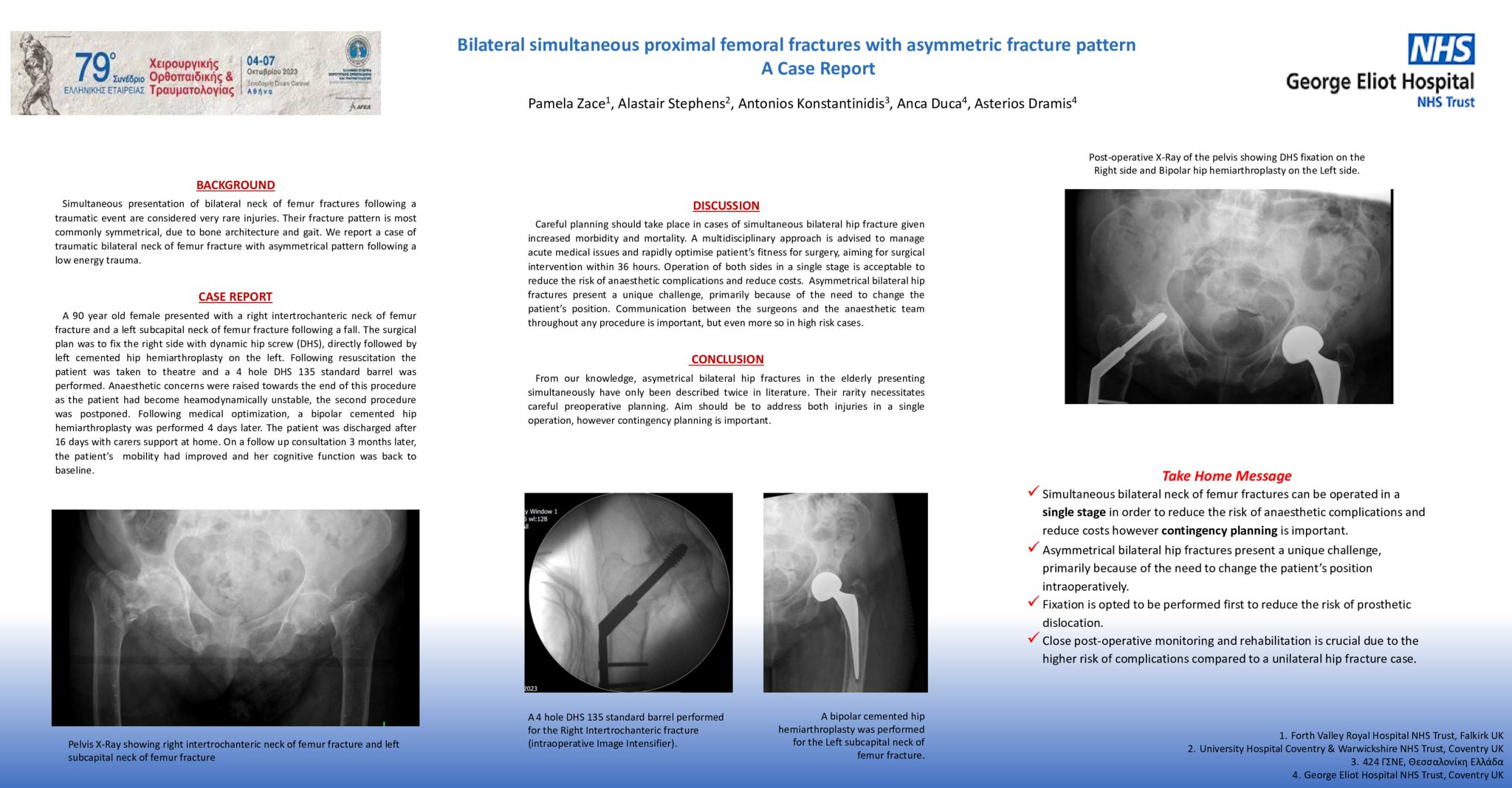BACKGROUND: Simultaneous presentation of bilateral neck of femur fractures following a traumatic event are considered very rare injuries. Their fracture pattern is most commonly symmetrical, due to bone architecture and gait. We report a case of traumatic bilateral neck of femur fracture with asymmetrical pattern following a low energy trauma.
CASE REPORT A 90 year old female presented with a right intertrochanteric neck of femur fracture and a left subcapital neck of femur fracture following a fall. The surgical plan was to fix the right side with dynamic hip screw (DHS), directly followed by left cemented hip hemiarthroplasty on the left. Following resuscitation the patient was taken to theatre and a 4 hole DHS 135 standard barrel was performed. Anaesthetic concerns were raised towards the end of this procedure as the patient had become heamodynamically unstable, the second procedure was postponed. Following medical optimization, a bipolar cemented hip hemiarthroplasty was performed 4 days later. The patient was discharged after 16 days with carers support at home. On a follow up consultation 3 months later, the patient’s mobility had improved and her cognitive function was back to baseline.
DISCUSSION Careful planning should take place in cases of simultaneous bilateral hip fracture given increased morbidity and mortality. A multidisciplinary approach is advised to manage acute medical issues and rapidly optimise patient’s fitness for surgery, aiming for surgical intervention within 36 hours. Operation of both sides in a single stage is acceptable to reduce the risk of anaesthetic complications and reduce costs. Asymmetrical bilateral hip fractures present a unique challenge, primarily because of the need to change the patient’s position. Communication between the surgeons and the anaesthetic team throughout any procedure is important, but even more so in high risk cases.
CONCLUSION From our knowledge, asymetrical bilateral hip fractures in the elderly presenting simultaneously have only been described twice in literature. Their rarity necessitates careful preoperative planning. Aim should be to address both injuries in a single operation, however contingency planning is important.
Take Home Message: 1.Simultaneous bilateral neck of femur fractures can be operated in a single stage in order to reduce the risk of anaesthetic complications and reduce costs however contingency planning is important. 2.Asymmetrical bilateral hip fractures present a unique challenge, primarily because of the need to change the patient’s position intraoperatively. 3.Fixation is opted to be performed first to reduce the risk of prosthetic dislocation. 4.Close post-operative monitoring and rehabilitation is crucial due to the higher risk of complications compared to a unilateral hip fracture case
- 1 προβολή




